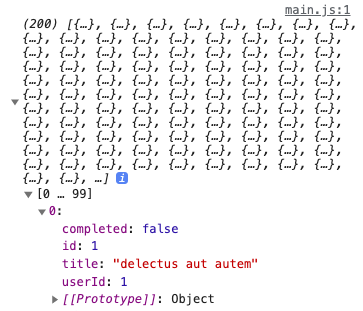Angular에서 http 초기 세팅하기
프로젝트 초기에 api 설정 파일을 만들어두면 나중에 작업하기 편하다.
Angular는 @angular/common 안에 존재하는 http 패키지를 사용하면 된다.
프로젝트 생성
# 앵귤러가 없을 시 설치
$ npm install -g @angular/cli
# 앵귤러 프로젝트 생성
$ ng new 프로젝트명
# 로컬에서 실행
$ ng serve
# or
$ yarn start
http 작업을 하기 위해 src/app.module.ts에서 HttpClientModule을 import 해야 한다.
src/app.module.ts
import { NgModule } from '@angular/core'
import { BrowserModule } from '@angular/platform-browser'
import { HttpClientModule } from '@angular/common/http'
import { AppRoutingModule } from './app-routing.module'
import { AppComponent } from './app.component'
@NgModule({
declarations: [AppComponent],
// BrowserModule 다음에 HttpClientModule를 작성해야 한다
imports: [BrowserModule, HttpClientModule, AppRoutingModule],
providers: [],
bootstrap: [AppComponent],
})
export class AppModule {}
ApiService 구축
api는 전역에서 사용하는 것이기 때문에 service로 만든다. (Angular 파일 구조 소개 참고)
필자는 src/api 폴더 아래에 api.service.ts 파일을 만들었다.
src/api/api.service.ts
import { Injectable } from '@angular/core'
@Injectable({
providedIn: 'root',
})
export class ApiService {
constructor() {}
}
Injectable이기 때문에 다른 module에서 import하지 않아도 바로 사용할 수 있다.
baseUrl 설정
이제 불러 올 api의 baseUrl을 설정해준다.
import { Injectable } from '@angular/core'
import { HttpClient } from '@angular/common/http'
@Injectable({
providedIn: 'root',
})
export class ApiService {
public BASE_URL = 'https://jsonplaceholder.typicode.com'
constructor(private http: HttpClient) {}
}
보통 BASE_URL은 각 프로젝트의 .env에서 환경 별로 다르게 설정한다.
src/environments/environments.ts
// environment.test.ts
export const environment = {
production: false,
baseUrl: 'https://test.api.example.com',
}
// environment.prod.ts
export const environment = {
production: true,
baseUrl: 'https://api.example.com',
}
이렇게 설정한 후, src/api/api.service.ts에 아래 처럼 불러오면 된다.
import { environment } from '../../environments/environment'
// ...생략
export class ApiService {
public BASE_URL = environment.baseUrl
}
http 메서드 설정
src/api/api.service.ts
import { Injectable } from '@angular/core'
import { HttpClient } from '@angular/common/http'
import { Observable } from 'rxjs'
@Injectable({
providedIn: 'root',
})
export class ApiService {
public BASE_URL = 'https://jsonplaceholder.typicode.com'
constructor(private http: HttpClient) {}
get<T>(endPoint: string): Observable<T> {
return this.http.get<T>(`${this.BASE_URL}${endPoint}`)
}
post<T>(endPoint: string, body: any): Observable<T> {
return this.http.post<T>(`${this.BASE_URL}${endPoint}`, body)
}
put<T>(endPoint: string, body: any): Observable<T> {
return this.http.put<T>(`${this.BASE_URL}${endPoint}`, body)
}
delete<T>(endPoint: string): Observable<T> {
return this.http.delete<T>(`${this.BASE_URL}${endPoint}`)
}
}
Angular의 http의 return 타입은 모두 Observable이기 때문에, 할당할 변수의 타입도 Observable로 지정해야 한다.
src/pages/home.components.ts
import { Component, OnInit } from '@angular/core'
import { Observable } from 'rxjs'
import { ApiService } from 'src/app/api/api.service'
@Component({
selector: 'app-home',
templateUrl: './home.component.html',
styleUrls: ['./home.component.scss'],
})
export class HomeComponent implements OnInit {
todos$: Observable<
{
id: number
title: string
userId: number
completed: boolean
}[]
>
constructor(private api: ApiService) {
this.todos$ = this.api.get('/todos')
this.todos$.subscribe(console.log) // console 확인
}
ngOnInit(): void {}
}

todos console
console로도 데이터가 잘 들어오는 걸 확인할 수 있다.
Error 처리
만약 에러를 처리하고 싶다면, 각 api 요청마다 설정할 수도 있지만 api.service.ts에서 설정 해줘도 된다.
src/api/api.service.ts
import { catchError } from 'rxjs/operators'
// ...생략
export class ApiService {
private handleError(error: HttpErrorResponse) {
if (error.status === 0) {
console.error('Error:', error.error)
} else {
console.error(`Backend error ${error.status}, ${error.error}`)
}
return throwError('예기치 못한 에러가 발생했습니다. 다시 시도해주세요.')
}
get<T>(endPoint: string): Observable<T> {
return this.http
.get<T>(`${this.BASE_URL}${endPoint}`)
.pipe(catchError(this.handleError))
}
}
참고